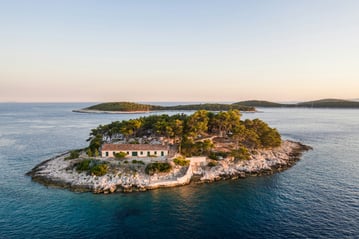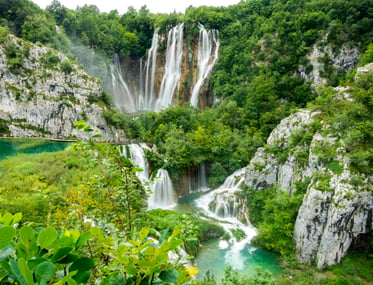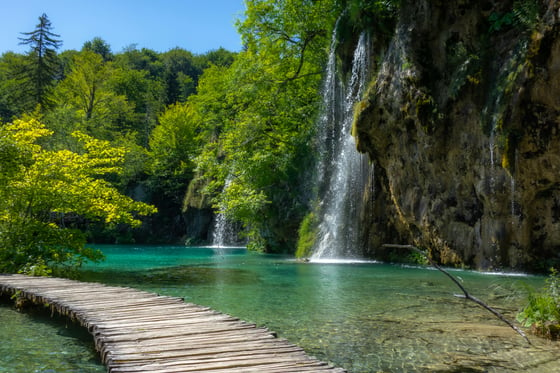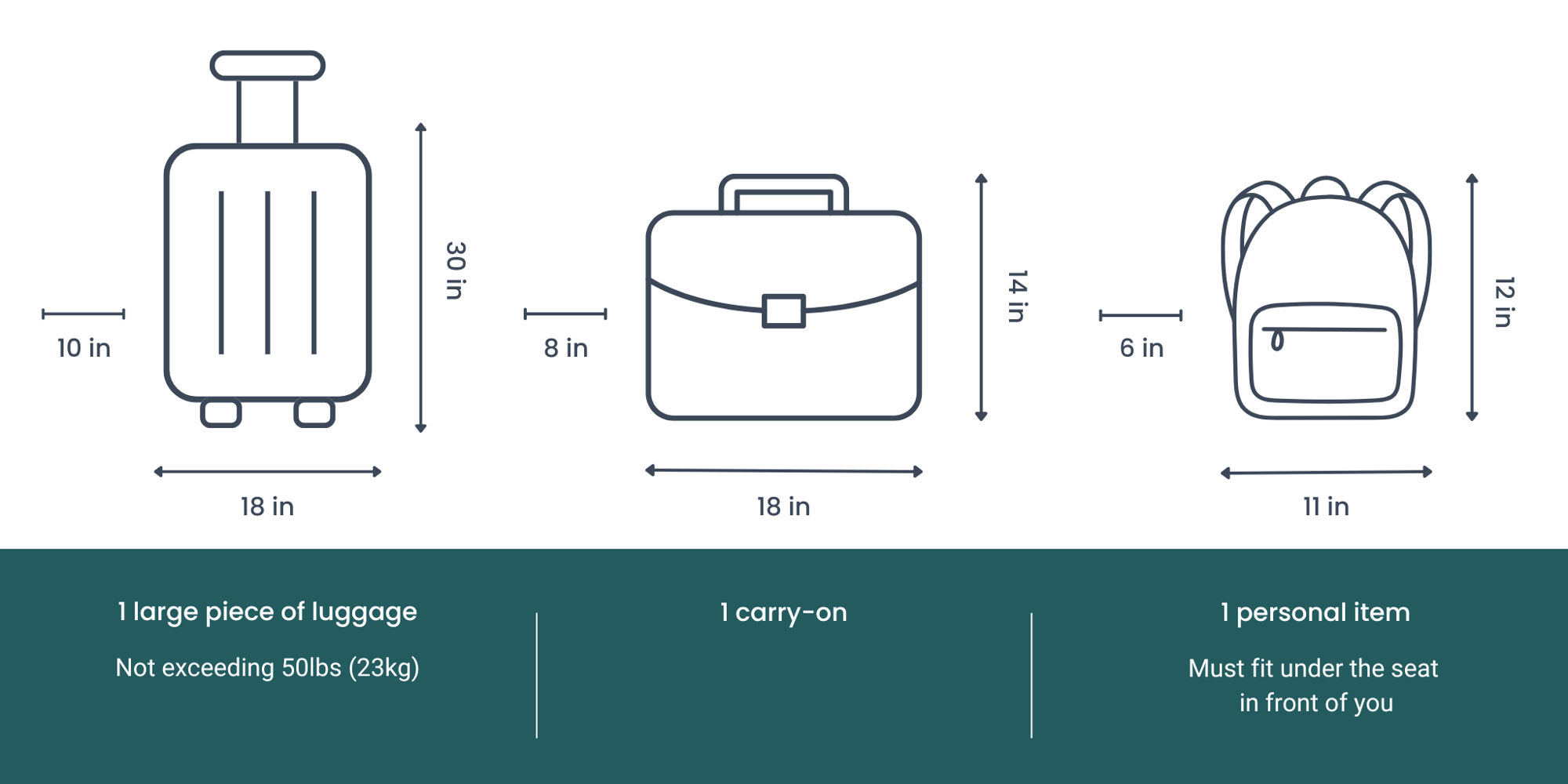Croatia Destination Guide
Welcome to your adventure! This essential guide will help you prepare for an unforgettable journey through Croatia's stunning coastline, historic cities, and natural wonders.



Essential Travel Information for Croatia
Everything you need to know before your Croatian adventure
Visa & Entry Requirements
- Passport Validity: Must be valid for at least three months beyond your departure date.
- Schengen Area: Croatia is part of the Schengen Zone as of January 1, 2023.
- Visa: Check your local embassy for the latest entry advice.
Currency & Payments
- Currency: Euro (€) is the official currency since January 1, 2023.
- ATMs: Widely available in towns and cities. Inform your bank of travel plans.
- Credit Cards: Accepted in most establishments, but always carry some cash for smaller businesses.
Mobile & Internet
- SIM Cards: T-Hrvatski Telekom, A1, and Telemach offer affordable data packages.
- WiFi & Internet Access: Internet is widely available in hotels, cafés, and public areas throughout Croatia, especially in major cities and tourist-focused towns, though access may be more limited in rural areas.
- Cell Phone Coverage: Coverage is strong throughout Croatia’s major cities and urban areas, with service becoming less reliable on remote islands or in rural regions. Make sure global roaming is activated with your provider before you arrive.
- EU Roaming: EU citizens can use their domestic plans with no extra charges.
- Power: Type C and F plugs (European standard), 230V/50Hz.
Transportation Options
- Cycling: Cycling tours are popular on islands like Hvar, with scenic routes through vineyards, lavender fields, and coastal roads.
- Bike Alternatives in Korčula: If you're not comfortable with cycling, you can take a local bus (5€), water taxi (24€), or arrange a private transfer to Lumbarda.
- Ferries: Croatia’s islands are commonly accessed via ferries, especially routes like Split to Hvar.
- E-Bikes: Available for travelers who can ride but are concerned about fitness levels.
- Flights: Need help searching for a flight? We recommend Skyscanner.com to compare different routes and rates. Click here to search!
Climate & Weather
- Coastal Croatia: Mediterranean climate - hot, dry summers (25-30°C/77-86°F) and mild winters.
- Inland/Zagreb: Continental climate - warm summers and cold winters with snow.
- Best Time to Visit: May-June and September-October for pleasant weather and fewer crowds.
- Peak Season: July-August has the hottest temperatures and largest crowds.
Emergency Contacts
- European Emergency Number: 📞 112 (works for police, fire, ambulance)
- Police: 📞 192
- Tourist Police (Zagreb): 📞 +385 1 4563 429
- U.S. Embassy in Zagreb: 📞 +385 1 661 2200
Time Zone
- Croatia follows Central European Time (CET) – UTC +1.
- Daylight Saving Time: In summer (late March to late October), time shifts to UTC +2 (CEST).
- Croatia is 6 hours ahead of U.S. Eastern Time (EST), or 5 hours during EDT.
Packing Checklist for Croatia
Use this checklist to ensure you pack everything you need for your Croatian adventure
Travel Documents & Essentials
- Passport or ID card (for EU citizens)
- Travel insurance details
- Flight/ferry/bus tickets
- Hotel/accommodation reservations
- Credit/debit cards
- Euros (€) in cash
- Driver's license (if planning to rent a car)
- Travel adapter (European type C/F)
- Copies of important documents (separate from originals)
- Emergency contact information
Clothing & Accessories
- Lightweight, breathable clothing (summer)
- Coat, sweaters, and waterproof shoes (winter)
- Swimming gear (the Adriatic is irresistible!)
- Light cover-up for beach to town transitions
- Comfortable walking shoes for cobblestone streets
- Water shoes for rocky beaches
- Hat and sunglasses
- Light rain jacket (especially in shoulder seasons)
- Dressier outfit for nice restaurants
- Modest clothing for visiting churches
- Light sweater or jacket for evenings
Health & Safety
- European Health Insurance Card (for EU citizens)
- Travel insurance policy details
- Prescription medications in original packaging
- Basic first-aid kit
- Motion sickness remedies (for boat trips)
- High SPF sunscreen (the Croatian sun is strong!)
- After-sun lotion or aloe vera
- Insect repellent
- Hand sanitizer
- Reusable water bottle
Beach & Activities
- Beach towel (quick-dry travel towel saves space)
- Snorkeling gear (the Adriatic has great visibility)
- Waterproof phone case
- Dry bag for boat trips
- Daypack for excursions
- Reusable shopping bag (for markets)
- Camera or GoPro
- Hiking shoes (if visiting national parks)
- Water bottle with filter
- Packable sun umbrella
Packing Tips
- Pack light! Many accommodations in Croatia's historic towns require climbing stairs with your luggage.
- Beach essentials: Croatian beaches are primarily pebble or rock, so water shoes are highly recommended.
- Dress code: Croatians tend to dress well, especially in the evening. Pack at least one nicer outfit.
- Pharmacy items: While readily available, some brands might differ, so bring must-have personal items.
Top Destinations & Experiences
Discover Croatia's most incredible places, from ancient walled cities to stunning national parks

Dubrovnik
Known as the "Pearl of the Adriatic," this UNESCO World Heritage site features perfectly preserved medieval walls surrounding a stunning Old Town.
Must-See Attractions:
- City Walls Walk – 2km circuit with spectacular views of the old town and sea.
- Stradun – The main marble-paved street running through the heart of Old Town.
- Cable Car – Ride to Mount Srđ for panoramic views of the city and islands.
- Lokrum Island – A short boat ride away with beautiful gardens and swimming spots.
Split & Diocletian's Palace
Croatia's second-largest city features an incredible Roman palace that forms the heart of the old town, where locals still live and work.
Split Highlights:
- Diocletian's Palace – An ancient Roman complex that makes up most of the old town.
- Riva Promenade – The lively seafront is perfect for people-watching and coffee.
- Marjan Hill – A forested park peninsula offering escape from the city and great views.
- Bačvice Beach – Sandy city beach where locals play picigin (traditional beach ball game).


Plitvice Lakes National Park
Croatia's most famous national park features 16 terraced lakes connected by spectacular waterfalls and wooden walkways through pristine forest.
Plitvice Highlights:
- Upper Lakes – The larger, more peaceful section with big waterfalls.
- Lower Lakes – Dramatic canyon setting with boardwalks alongside turquoise water.
- Veliki Slap – The park's largest waterfall at 78 meters high.
- Electric Boat Ride – Cross Lake Kozjak to connect between upper and lower sections.
Must-Try Croatian Foods
Croatian cuisine blends Mediterranean flavors with Central European influences. Here are some essential dishes to try during your visit:
Crni Rižot
Black risotto with squid ink, seafood, and garlic.
Peka
Meat and vegetables are slow-cooked under a bell-like dome.
Fresh Grilled Fish
Local catch drizzled with olive oil and herbs.
Pag Cheese
Award-winning sheep cheese from Pag Island.
Croatian Wines
Try local varieties like Pošip, Malvazija, and Plavac Mali.
Štrukli
Pastry filled with cottage cheese and sour cream.
Local Culture & Responsible Travel
Tips for respectful travel and cultural awareness during your Croatian adventure
Cultural Etiquette
- Greetings: Handshakes are common. Friends often greet with a kiss on each cheek.
- Respect for History: Croatia's recent history includes the 1990s War of Independence. Be sensitive when discussing this topic.
- Church Etiquette: Cover shoulders and knees when visiting churches. Remove hats and maintain a respectful volume.
- Dining: Saying "Dobar tek" (bon appétit) before a meal is appreciated. Wait for everyone to be served before eating.
- Language: Learning basic Croatian phrases is appreciated, but many people in tourist areas speak English.
Responsible Tourism
- Overtourism: Popular destinations like Dubrovnik can get extremely crowded. Consider visiting in the shoulder seasons.
- Water Conservation: Croatia experiences summer water shortages, especially on islands. Use water responsibly.
- Marine Protection: The Adriatic Sea is a precious ecosystem. Use reef-safe sunscreen and never throw anything overboard.
- Local Economy: Support local businesses, artisans, and family-run restaurants rather than international chains.
- Waste Reduction: Carry a reusable water bottle and shopping bag to reduce plastic waste.
⚠️ Important Safety Note
While Croatia is generally very safe, be aware of leftover landmines in certain remote inland areas from the 1990s war. Stick to marked paths when hiking in less-visited parts of Eastern Croatia.
Additional Travel Tips
- Island Ferries: Book in advance during high season as they can fill up quickly.
- Croatian Roads: Beautiful coastal roads, but can be narrow with sharp turns. Drive carefully.
- Currency Exchange: Exchange offices in tourist areas often have poor rates. Use ATMs instead.
- Accommodations: Space is a precious commodity in Europe, especially in its most dense cities; be prepared for smaller hotel rooms. The same goes for bathrooms and elevators; don’t be surprised if they feel cozier than those in the US.
- Beaches: Most are pebble or rock, not sand. Water shoes are highly recommended.
- Coffee Culture: Croatians love their coffee breaks. Join in and enjoy the laid-back pace.
- Tipping: Not obligatory, but 10% is appreciated for good service in restaurants.
- Water: Tap water in Croatia is generally safe to drink, though its mineral content can cause mild stomach discomfort for some travelers. If you’re sensitive or unsure, opt for filtered water instead of relying on bottled water.
Tipping
Tipping Suggestions: Tips for guides, drivers and restaurants are not included. Tips provide supplemental income, and, while not mandatory, are greatly appreciated. If the local teams have added to the experience, please reward them.
| Guides | USD $10-15 per person/per day | |
| Drivers | USD $8-10 per person/per day | |
| Restaurants | USD 10%-20% of total bill |
Luggage Restrictions

